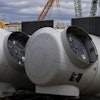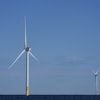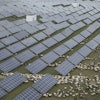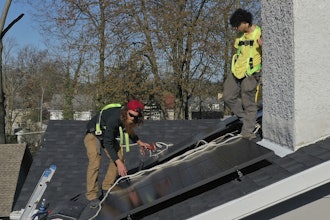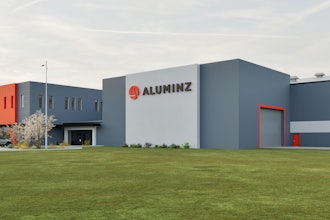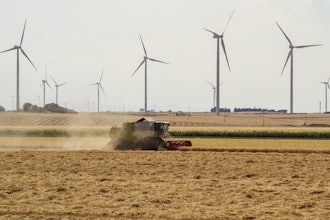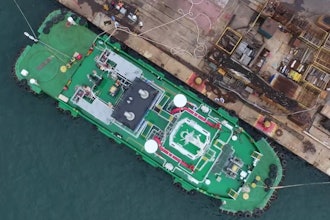
In March, Silicon Valley battery manufacturer Amprius Technologies, Inc. announced that its lithium-ion cell can provide an energy density of 500 watt-hours per kilogram. Fellow battery manufacturer Mobile Power Solutions verified Amprius' battery performance and reported that the cell model provides more than 504 watt-hours per kilogram at 25°C.
According to Amprius Lab President Jon Bornstein, the cells offer a run time of 200% compared to graphite cells, while being smaller and lighter than other batteries with a similar energy content. This innovation could benefit electric vehicles, planes, drones and other devices powered by batteries requiring extended power durations.
Amprius plans to ship prototypes to select customers this year.
Industrial Media reached out to Dr. Ionel Stefan, the CTO of Amprius, to discuss the technology and its potential impacts.
Nolan Beilstein (NB): How was Amprius able to achieve a 500 Wh/kg density for its cells?
Ionel Stefan (IS): Amprius eliminated the need for binders and conductive additive materials in the composition of anode, effectively making the entire anode electrochemically active, i.e., active material in storing lithium.
Silicone anodes can store 3,600 milliampere-hours per gram (mAh/g) of lithium in theory, compared with graphite’s 372 mAh/g. This anode structure and material have then the highest capacity to store lithium, requiring the least amount for a certain energy target, which results in one the highest energy density batteries on the market today.
When paired with high capacity and high loading cathodes, the specific energy reaches 500 Wh/kg and potentially higher in the future.
NB: What difficulties did the company encounter when developing this technology?
IS: Our manufacturing process is the same as typical lithium-ion battery manufacturing, with the exception of the silicon anode component. The silicon anode is fabricated on a production-proven deposition system designed for high-volume manufacturing. This equipment has been proven in the solar industry; however, it is new to battery applications and is critical to the performance and scale-up of silicon anodes.
Optimizing the deposition process has been one of the challenges in scaling. The remaining components, such as the cathode and separator, are the same as those found in other industry cells. With a theoretical capacity of 3600 mAh/g, the anode material has more than 15 times higher capacity than the highest capacity cathode material.
Commercial cathode materials need to be coated at high loading to be matched with silicon, to specifications new to the battery industry. Developing these new battery materials is difficult because the number and duration of tests required is extensive.
NB: Aside from the density, how does this platform differ from other lithium-ion battery cells?
IS: Amprius succeeded in completely replacing the graphite anode material with silicon, by developing a material structure that reduces the material stress and expansion during cycling, stabilizing its structure. The silicon element has the highest capacity to combine with lithium among all elements in the periodic table of elements.
A pure silicon anode material is unique to Amprius and its nanowire structure has been patented. Moreover, as the nanowire structure is rooted, it insures high electronic and ionic conductivity within electrode, which makes the cells not only of high energy density but also of high power density, capable of extremely fast charge and discharge rates.
NB: What doors does this development open for Amprius?
IS: The 500 Wh/kg battery platform significantly expands boundaries for our customers and is a tailored solution for applications that require maximum discharge times without compromising key features such as aircraft payload and without having to increase vehicle weight.
The new batteries demonstrate both high gravimetric energy density (Wh/kg) and volumetric energy density (Wh/L) with exceptional adaptability. The customizable platform allows customers to select the option to either increase energy content in a battery pack without increasing weight, reduce weight in applications that target a fixed energy content or combinations of both.
Higher energy is important for longer run times, range and endurance, while lighter packs increase energy efficiency – even for the same battery energy content.
NB: What will this platform impact the most in electrification?
IS: The most immediate impact is on electric flight, increasing both the range and usability (payload), as well as the possibly enabling use cases where electric power was considered impossible to date.
High energy density batteries may increase the application of electric power to larger vehicles with longer range, increasing the market penetration and acceptance of electric transportation. The technology is highly adaptable to applications, markets and cell form factors or types.
Different applications require different cell sizes, power/energy ratio, cycle life, calendar life, temperature operating range and cost. Amprius has developed a wide range of cells, from very small batteries for wearable electronics and mini drones to large EV cells, meeting performance metrics for different applications.
NB: What customers are set to receive prototypes?
IS: Although we cannot share which specific customers are set to receive the prototypes, we can discuss some of our current customers’ use cases. Amprius has established partnerships with multiple companies in the electric aviation sector.
Those that allow us to identify them by name include:
- BAE Systems, who is collaborating with us to support their electric aviation projects.
- Teledyne FLIR to provide lightweight, energy dense cells to power their unmanned aerial systems intended for defense and security purposes.
- AALTO Airbus is another significant customer that relies on our cells to power their autonomous High-Altitude Pseudo Satellite (HAPS) aircraft, Zephyr. In 2022, our collaboration with AALTO Airbus resulted in a record-breaking 64-day flight.
- We are preparing to supply commercial level shipments to AeroVironment in support of the company’s Switchblade 300 Block 20 loitering missile system.
- There are also multiple projects ongoing with the U.S. Military, including developing safe cells for wearables and high-energy cells for other defense applications.

